Exploring Telemedicine: Benefits, Examples, and Future Trends
Definition of telemedicine
Telemedicine is the remote delivery of healthcare services using telecommunications technology. It allows patients to consult with healthcare providers virtually, without the need for in-person visits, using tools like video calls, phone calls, and messaging platforms.

Benefits of Telemedicine:
- Improved Access to Healthcare:
- Telemedicine eliminates geographical barriers, allowing patients in remote or underserved areas to access healthcare services.
- Individuals with mobility issues or transportation limitations can receive medical care without the need for travel.
- Convenience and Efficiency:
- Patients can schedule appointments at their convenience, reducing wait times and avoiding the hassle of commuting and waiting rooms.
- Telemedicine appointments often require less time commitment compared to in-person visits, leading to increased efficiency for both patients and providers.
- Cost-Effectiveness:
- Telemedicine reduces healthcare costs associated with travel, parking, and time off work for both patients and healthcare providers.
- By preventing unnecessary emergency room visits and hospital readmissions, telemedicine can lower overall healthcare expenditures.
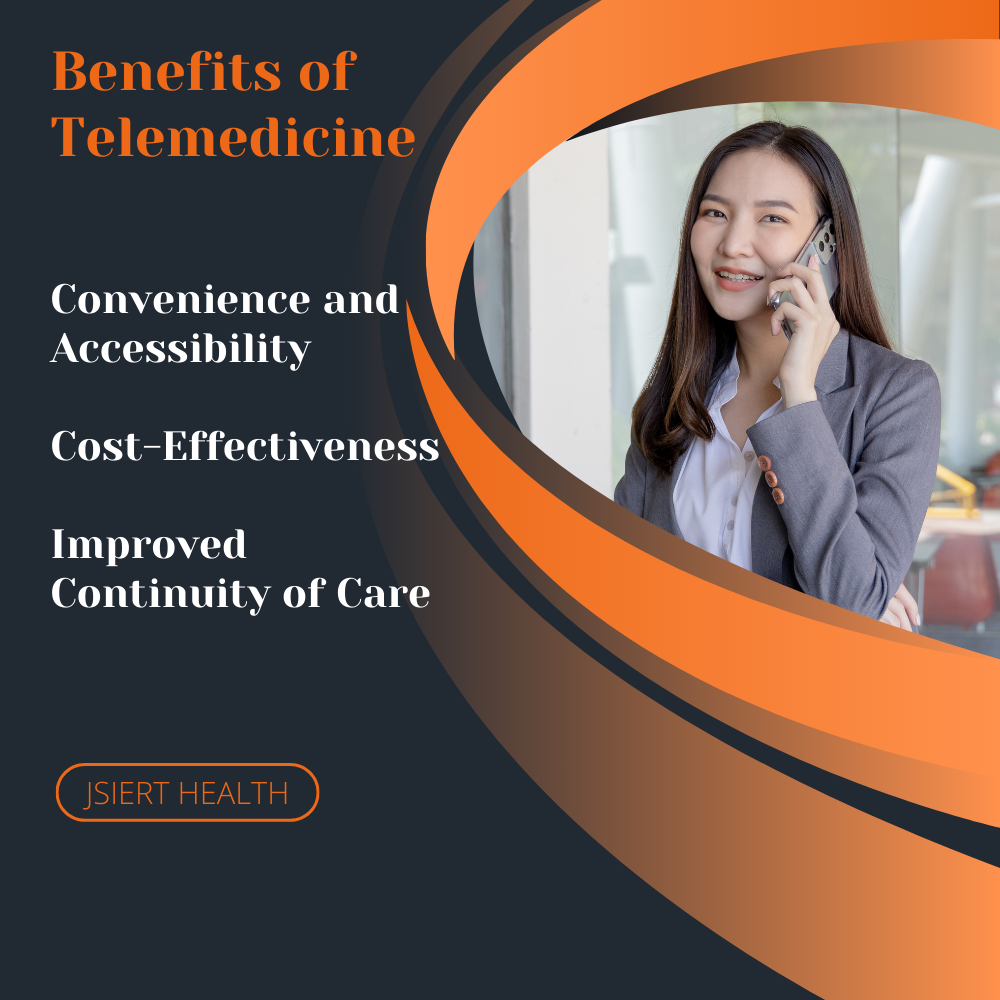
- Enhanced Patient Engagement:
- Telemedicine platforms offer tools for secure messaging, appointment scheduling, medication reminders, and health tracking, promoting active patient participation in their care.
- Patients can access educational resources and personalized health information, empowering them to make informed decisions about their health.
- Quicker Access to Specialists:
- Telemedicine enables patients to consult with specialists located in different regions or healthcare systems, reducing wait times for specialist appointments.
- Timely access to specialized care improves outcomes for patients with complex or rare medical conditions.
- Reduced Risk of Infections:
- During public health emergencies such as pandemics, telemedicine minimizes the risk of virus transmission by limiting in-person interactions between patients and healthcare providers.
- Vulnerable populations, such as immunocompromised individuals or elderly patients, benefit from the reduced exposure to infectious diseases.
Examples of Telemedicine:
- Teleconsultations:
- Patients can consult with primary care physicians, specialists, or mental health professionals via video conferencing, phone calls, or secure messaging platforms.
- Teleconsultations are suitable for various healthcare needs, including routine check-ups, follow-up visits, and acute care consultations.
- Remote Monitoring:
- Wearable devices, such as fitness trackers or blood glucose monitors, collect real-time health data that can be transmitted to healthcare providers for remote monitoring.
- Remote monitoring is particularly beneficial for patients with chronic conditions, allowing early detection of health issues and timely interventions.
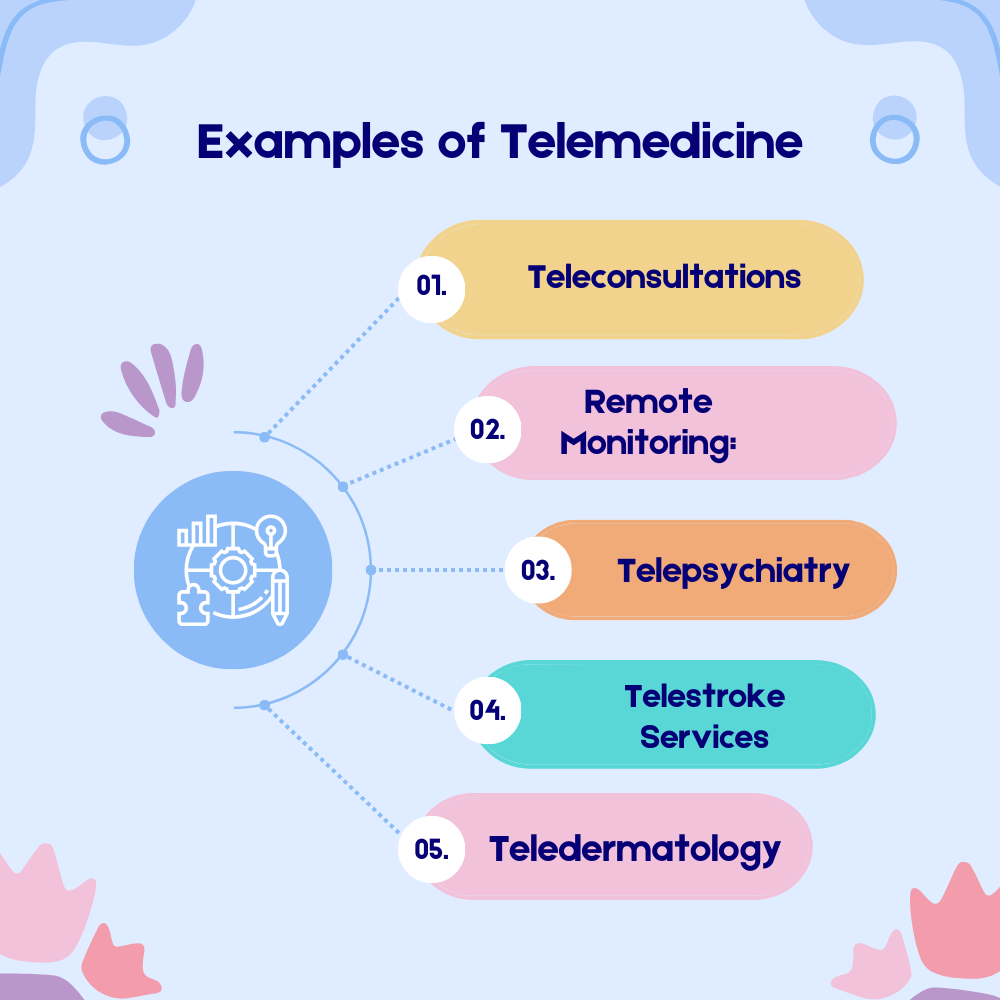
- Telepsychiatry:
- Mental health services, including therapy sessions, psychiatric evaluations, and medication management, are delivered remotely via video conferencing or telephone.
- Telepsychiatry improves access to mental healthcare, reduces stigma associated with seeking treatment, and enables continuity of care for patients in rural or underserved areas.
- Telestroke Services:
- Emergency departments and stroke centers use telemedicine to facilitate rapid assessment and treatment of stroke patients, including the administration of clot-busting medications.
- Telestroke services connect local healthcare providers with stroke specialists for timely decision-making and intervention, improving outcomes for stroke patients.
- Teledermatology:
- Patients submit photos or videos of skin lesions or rashes to dermatologists for remote diagnosis and management.
- Teledermatology reduces wait times for dermatology appointments, enhances access to specialist care, and facilitates early detection of skin cancers and other dermatological conditions.
Future Trends in Telemedicine:
- Integration of Artificial Intelligence (AI):
- AI-powered algorithms analyze patient data to assist healthcare providers in diagnostics, treatment planning, and patient triage.
- AI chatbots and virtual assistants provide personalized health advice, answer patient queries, and streamline administrative tasks.
- Expansion of Remote Monitoring Technologies:
- Advancements in wearable devices, remote patient monitoring systems, and home-based medical sensors enable continuous monitoring of vital signs, medication adherence, and disease progression.
- Remote monitoring technologies empower patients to actively participate in their care and alert healthcare providers to potential health concerns in real-time.
- Telemedicine in Chronic Disease Management:
- Telemedicine platforms offer comprehensive care management for patients with chronic conditions, including remote monitoring, medication management, and lifestyle coaching.
- Telemedicine interventions focus on improving patient outcomes, reducing hospitalizations, and optimizing disease management strategies.

- Virtual Reality (VR) and Augmented Reality (AR) Applications:
- VR and AR technologies enhance telemedicine experiences by creating immersive virtual environments for medical consultations, simulations, and training.
- VR-based therapy programs support mental health interventions, pain management, and rehabilitation exercises for patients with neurological or musculoskeletal disorders.
- Policy and Regulatory Changes:
- Governments and healthcare organizations continue to revise telemedicine regulations and reimbursement policies to promote widespread adoption and ensure quality care delivery.
- Telemedicine licensure compacts and interstate agreements facilitate provider mobility and expand access to telehealth services across state and national borders.
- Integration with Electronic Health Records (EHR):
- Seamless integration of telemedicine platforms with electronic health record systems enhances data sharing, care coordination, and documentation of telehealth encounters.
- Healthcare providers can access patient medical histories, lab results, and imaging studies during teleconsultations, facilitating informed decision-making and continuity of care.
- Telemedicine in Emergency Medicine:
- Emergency departments utilize telemedicine to triage patients, provide remote consultations with specialists, and facilitate timely transfer of critically ill patients to higher-level care facilities.
- Tele-emergency services improve access to emergency care in rural or remote areas with limited onsite medical expertise.
- Expansion of Telemedicine Specialties:
- Telemedicine extends beyond primary care and urgent care to include a wide range of medical specialties, such as cardiology, oncology, pulmonology, and orthopedics.
- Specialty telemedicine programs offer virtual consultations, second opinions, and post-operative follow-up care, enhancing access to specialized expertise and reducing patient travel burden.
- Telemedicine in Public Health Initiatives:
- Telemedicine plays a pivotal role in public health interventions, such as disease surveillance, outbreak response, and vaccination campaigns.
- Telehealth platforms support remote monitoring of infectious disease cases, contact tracing efforts, and dissemination of public health education and resources.
- Global Expansion of Telemedicine Services:
- Telemedicine transcends national boundaries, enabling cross-border collaborations, medical tourism, and humanitarian aid efforts.
- International telemedicine initiatives address healthcare disparities in low-resource settings, deliver specialty care to underserved populations, and support disaster relief operations in crisis-affected regions.
Challenges and Considerations:
- Digital Divide:
- Disparities in access to technology, internet connectivity, and digital literacy limit the adoption of telemedicine services among certain populations, exacerbating healthcare inequities.
- Strategies to bridge the digital divide include community outreach programs, subsidized internet access, and telemedicine training for underserved communities.
- Privacy and Security Concerns:
- Telemedicine platforms must adhere to strict data privacy regulations and implement robust security measures to safeguard patient confidentiality and protect against data breaches.
- Encryption, authentication protocols, and secure messaging functionalities ensure the privacy and integrity of telehealth communications and electronic health records.
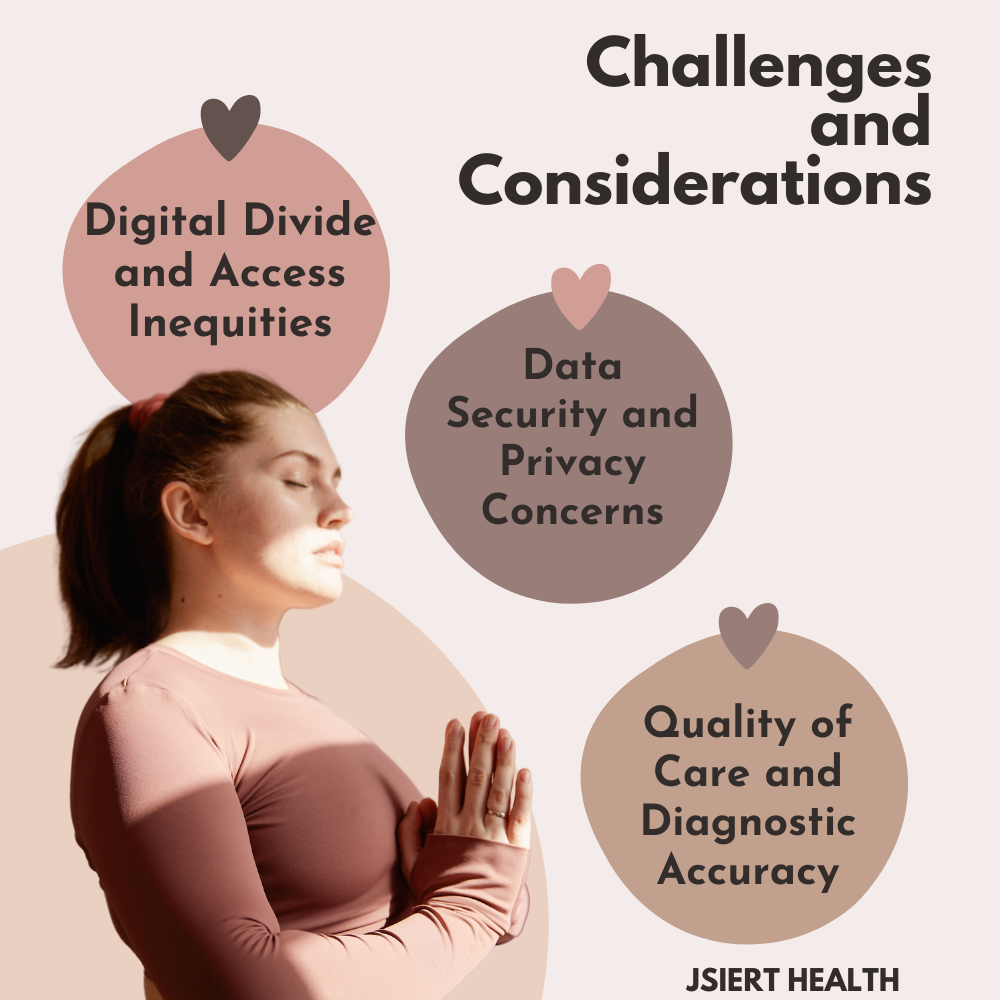
- Regulatory Compliance:
- Telemedicine providers must comply with state, federal, and international regulations governing licensure, reimbursement, medical liability, and telehealth practice standards.
- Ongoing regulatory updates and legal uncertainties pose challenges for telemedicine adoption, necessitating proactive engagement with policymakers and stakeholders.
- Quality of Care:
- Ensuring the quality and safety of telemedicine services requires adherence to evidence-based clinical guidelines, professional standards of practice, and telehealth accreditation standards.
- Continuous quality improvement initiatives, clinical outcome monitoring, and patient satisfaction surveys enhance the accountability and effectiveness of telehealth delivery models.
- Health Equity and Inclusion:
- Telemedicine initiatives should prioritize health equity, cultural competence, and linguistic diversity to address the unique healthcare needs and preferences of diverse patient populations.
- Culturally sensitive telehealth practices, language interpretation services, and accessible digital platforms promote inclusivity and equitable access to telemedicine services for all individuals.
Technological Advancements in Telemedicine:

- 5G Technology: The rollout of 5G networks enables high-speed, low-latency communication, facilitating real-time telemedicine applications, remote surgery, and immersive virtual consultations.
- IoT Integration: Internet of Things (IoT) devices, such as smart home health monitors and wearable sensors, provide real-time health data that can be seamlessly integrated into telemedicine platforms for remote monitoring and personalized care.
- Artificial Intelligence (AI): AI algorithms analyze large datasets, identify patterns, and generate insights to support clinical decision-making, risk prediction, and treatment planning in telemedicine settings.
- Blockchain Technology: Blockchain ensures the security, integrity, and traceability of telehealth data, enhancing patient privacy, interoperability, and transparency in healthcare transactions and electronic health records.
Patient Education and Empowerment:
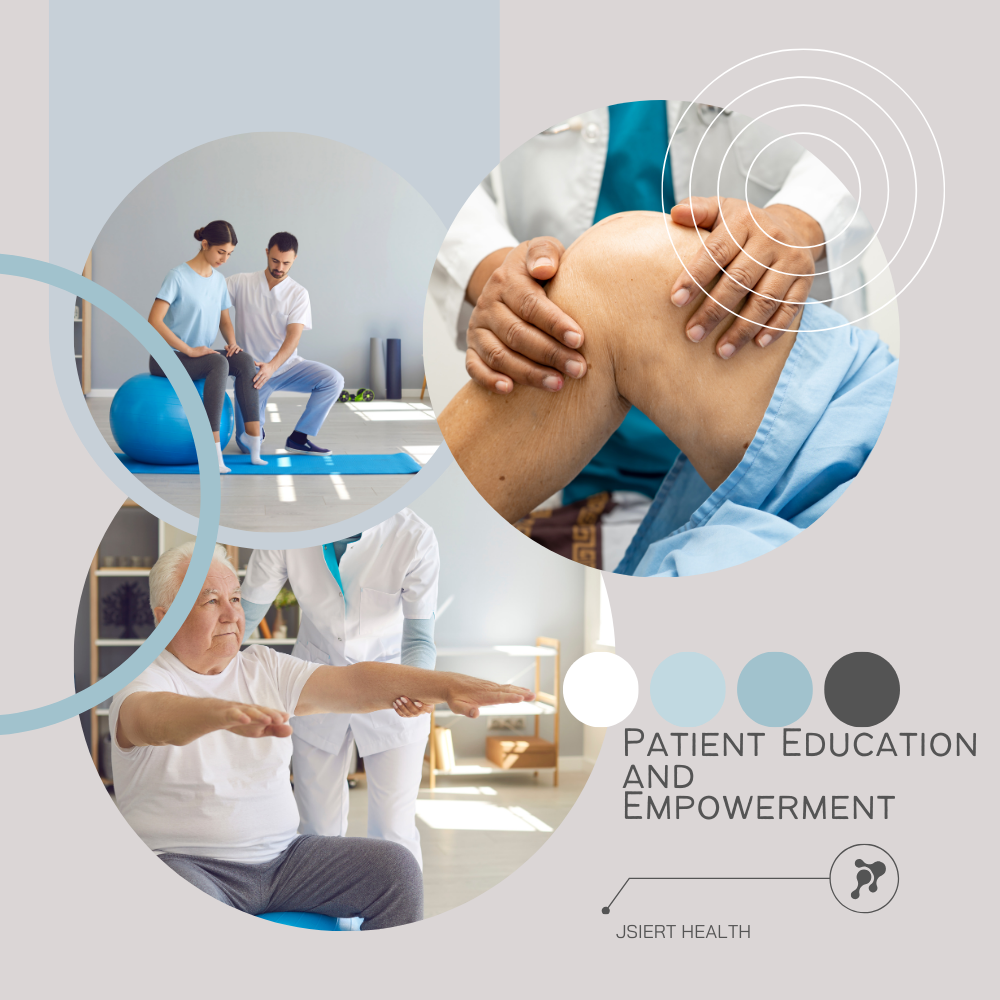
- Health Literacy Initiatives: Telemedicine platforms offer educational resources, multimedia content, and interactive tools to promote health literacy, disease prevention, and self-management skills among patients.
- Shared Decision-Making: Telemedicine consultations emphasize patient-centered care, informed consent, and shared decision-making, empowering patients to actively participate in treatment planning, goal setting, and care preferences.
- Remote Health Coaching: Telemedicine programs integrate health coaching, behavior change interventions, and lifestyle modification programs to empower patients to adopt healthier habits, adhere to treatment regimens, and achieve their health goals.
Telemedicine in Disaster Response and Public Health Emergencies:
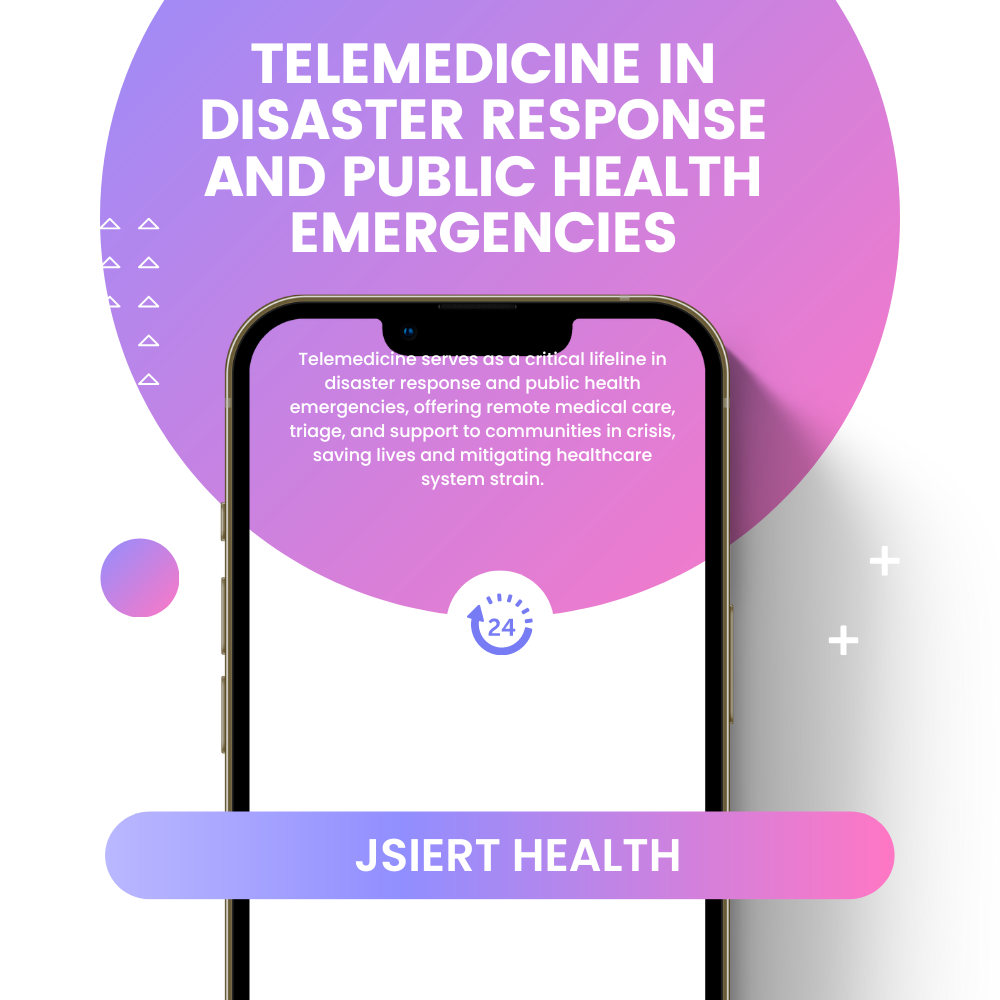
- Emergency Preparedness: Telemedicine infrastructure supports disaster preparedness efforts, contingency planning, and surge capacity management for healthcare systems facing natural disasters, pandemics, or mass casualty events.
- Virtual Triage and Triage Decision Support: Teletriage systems enable remote assessment, triage, and prioritization of patients based on severity of illness, resource availability, and clinical urgency, optimizing patient flow and allocation of healthcare resources.
- Telemedicine for Quarantine and Isolation: Telehealth services deliver medical care, mental health support, and social services to individuals in quarantine or isolation due to infectious diseases, ensuring continuity of care and mitigating social isolation.
Interdisciplinary Collaboration and Team-Based Care:

- Telemedicine Networks: Collaborative telemedicine networks connect multidisciplinary teams of healthcare providers, specialists, allied health professionals, and community resources to deliver coordinated, comprehensive care across geographic distances.
- Virtual Care Coordination: Telemedicine platforms facilitate care coordination, care transitions, and multidisciplinary consultations, enabling seamless communication, information sharing, and care planning among healthcare team members.
- Telemedicine for Complex Cases: Team-based telemedicine models support the management of complex, chronic conditions, comorbidities, and high-risk patient populations through integrated care plans, care management protocols, and interdisciplinary case conferences.
Global Telemedicine Initiatives and Partnerships:
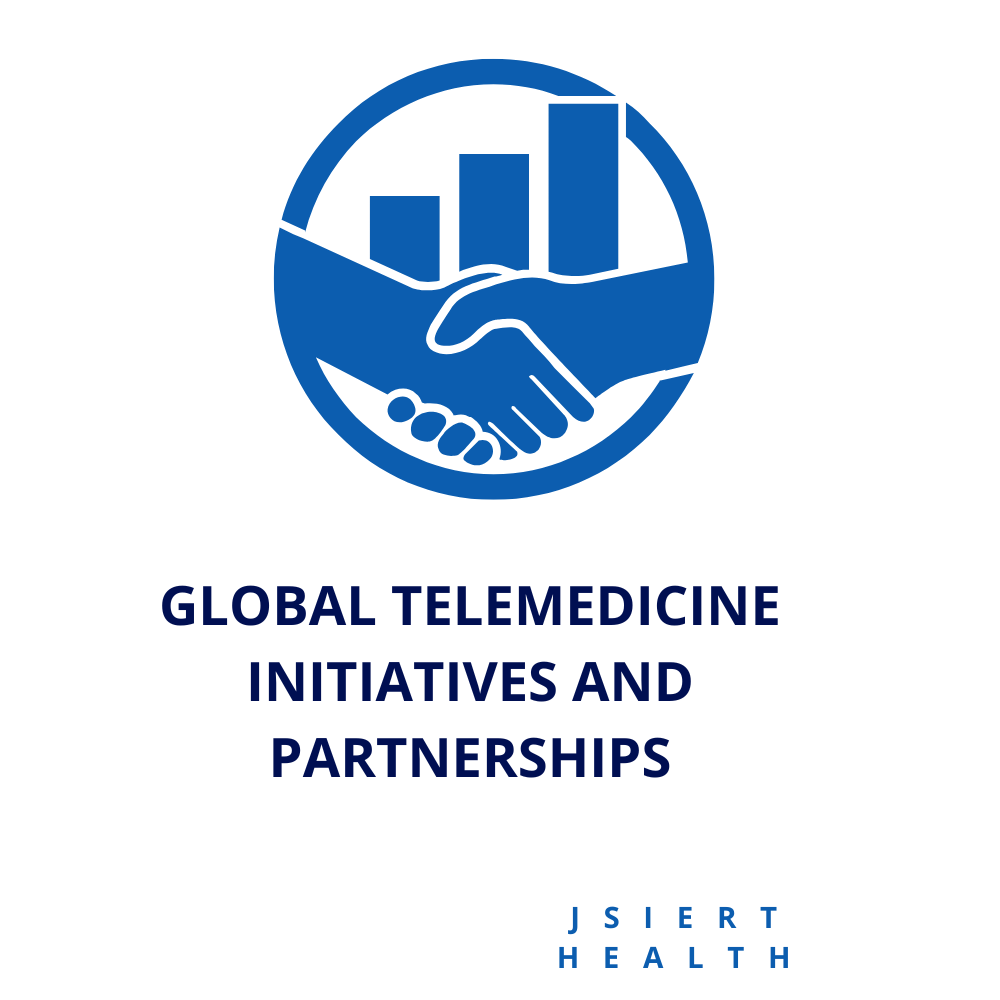
- International Collaboration: Telemedicine initiatives foster global partnerships, knowledge sharing, and capacity building to address common healthcare challenges, promote best practices, and improve health outcomes worldwide.
- Telemedicine in Low-Resource Settings: Telehealth solutions leverage low-cost technologies, mobile health platforms, and community health workers to deliver essential healthcare services, preventive interventions, and health education to underserved populations in low-resource settings.
- Humanitarian Telemedicine: Telemedicine plays a vital role in humanitarian aid efforts, disaster relief operations, and refugee healthcare, providing remote medical consultations, emergency response support, and long-term health services to vulnerable populations affected by conflict, displacement, or natural disasters.
Telemedicine Regulations and Policy Landscape:
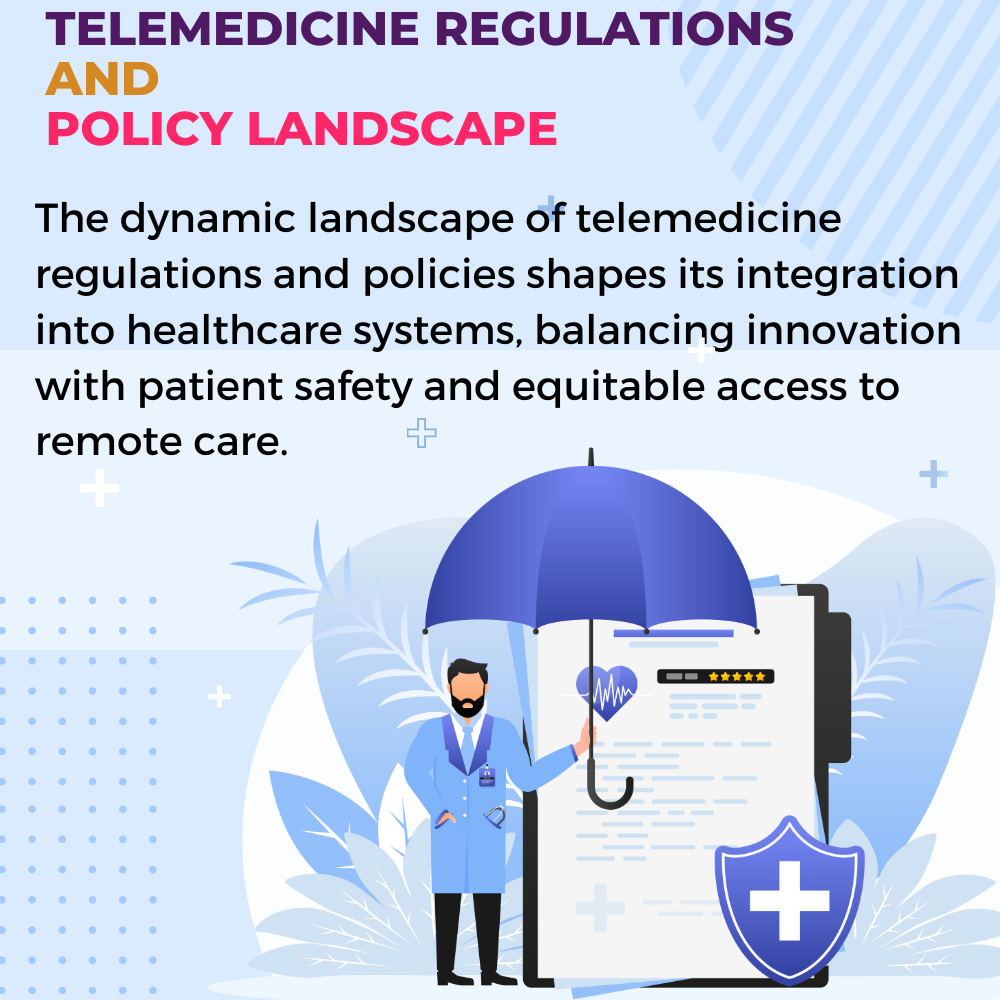
- Licensure and Interstate Practice: Telemedicine regulations vary by jurisdiction, with some states requiring providers to obtain licensure in the patient’s state for telehealth consultations.
- Reimbursement Policies: Insurance coverage and reimbursement for telemedicine services vary among payers, including private insurers, Medicare, and Medicaid, impacting the financial viability and sustainability of telehealth programs.
- Telemedicine Parity Laws: Many states have enacted telemedicine parity laws mandating equal coverage and reimbursement for telehealth services compared to in-person visits, promoting equitable access to telemedicine for patients and providers.
Telemedicine Adoption and Barriers to Implementation:

- Technology Infrastructure: Access to reliable internet connectivity, digital devices, and telecommunication infrastructure is essential for successful telemedicine implementation, particularly in rural and underserved areas with limited resources.
- Provider Training and Support: Healthcare providers require training, technical support, and ongoing education to effectively utilize telemedicine platforms, communicate with patients remotely, and navigate telehealth workflows.
- Patient Acceptance and Engagement: Patient acceptance of telemedicine may vary based on factors such as age, socioeconomic status, health literacy, and cultural preferences, highlighting the importance of patient education, outreach, and support.
- Workflow Integration: Integration of telemedicine into existing healthcare workflows, electronic health record systems, and administrative processes requires organizational buy-in, workflow redesign, and stakeholder engagement to ensure seamless care delivery and operational efficiency.
Telemedicine Research and Evidence Base:

- Clinical Outcomes Research: Telemedicine research evaluates the effectiveness, safety, and patient satisfaction outcomes of telehealth interventions across various medical specialties, populations, and healthcare settings.
- Health Economics Studies: Cost-effectiveness analyses assess the economic impact, return on investment, and value proposition of telemedicine programs in terms of healthcare utilization, resource utilization, and health outcomes.
- Implementation Science: Implementation research examines the facilitators, barriers, and contextual factors influencing the adoption, scalability, and sustainability of telemedicine initiatives in real-world clinical practice.
Consumerization of Telemedicine and Direct-to-Consumer Models:
- Telemedicine Platforms for Consumers: Direct-to-consumer telemedicine platforms offer convenient, on-demand access to virtual healthcare services, including urgent care, primary care, and specialty consultations, without the need for traditional healthcare referrals.
- Virtual Health Marketplaces: Online marketplaces and mobile apps connect patients with telemedicine providers, enabling price transparency, provider ratings, and consumer choice in selecting telehealth services based on cost, quality, and convenience.
- Retail Clinics and Telehealth Kiosks: Retailers, pharmacies, and non-traditional healthcare settings offer telemedicine services through onsite telehealth kiosks, walk-in clinics, and retail-based telemedicine partnerships, expanding access to care beyond traditional medical settings.
Frequently Asked Questions (FAQ) for Telemedicine
Q.1. What is telemedicine?
ANS: Telemedicine refers to the remote diagnosis and treatment of patients using telecommunications technology, such as video calls, phone calls, or secure messaging platforms.
Q.2. How does telemedicine work?
ANS: Telemedicine allows patients to connect with healthcare providers remotely. Patients can schedule appointments, discuss symptoms, receive medical advice, and even get prescriptions without physically visiting a doctor’s office.
Q.3. What are the benefits of telemedicine?
ANS:
- Convenience: Patients can access healthcare from the comfort of their homes.
- Accessibility: Telemedicine bridges the gap for patients in rural or underserved areas.
- Time-saving: Eliminates the need for travel time and waiting in a doctor’s office.
- Reduced exposure: Minimizes the risk of exposure to contagious illnesses, especially during pandemics.
- Continuity of care: Allows patients to stay in touch with their healthcare providers for ongoing management of chronic conditions.
Q.4. What medical conditions can be treated through telemedicine?
ANS: Telemedicine can address a wide range of non-emergency medical issues, including:
- Minor illnesses like colds, flu, allergies, and rashes
- Chronic disease management for conditions like diabetes or hypertension
- Mental health counseling and therapy sessions
- Medication management and prescription refills
- Follow-up appointments and post-operative care
Q.5. Is telemedicine covered by insurance?
ANS :Many insurance providers cover telemedicine services, especially for established patients with participating healthcare providers. However, coverage may vary depending on your insurance plan, so it’s essential to check with your insurer beforehand.
Q.6. What technology do I need for a telemedicine appointment?
ANS:
- Internet connection: A stable internet connection is necessary for video calls or online consultations.
- Device: You can use a smartphone, tablet, laptop, or desktop computer with a webcam and microphone.
- App or software: Some telemedicine platforms require you to download their app or software, while others offer web-based solutions.
- Private space: Find a quiet, private area with good lighting for your telemedicine appointment.
Q.7. Is telemedicine secure and private?
Telemedicine platforms prioritize patient privacy and security. They use encrypted communication channels and comply with healthcare regulations like HIPAA (Health Insurance Portability and Accountability Act) to ensure patient confidentiality.
Q.8. Can telemedicine replace in-person doctor visits entirely?
ANS: While telemedicine offers many benefits, it’s not a substitute for all in-person medical visits. Certain medical conditions may require physical examinations, diagnostic tests, or procedures that cannot be conducted remotely. Telemedicine works best for routine check-ups, follow-up appointments, and managing minor health issues.
Q.9. How do I schedule a telemedicine appointment?
ANS: To schedule a telemedicine appointment, contact your healthcare provider’s office or use their online booking system if available. They will guide you through the process of setting up the appointment, providing necessary information, and connecting with your provider at the scheduled time.
Q10. What should I expect during a telemedicine appointment?
ANS : During a telemedicine appointment, you’ll interact with your healthcare provider similar to an in-person visit. They will ask about your medical history, symptoms, and any concerns you have. You may discuss treatment options, receive medical advice, or get prescriptions if needed. Be prepared to provide relevant information and ask questions during the appointment.